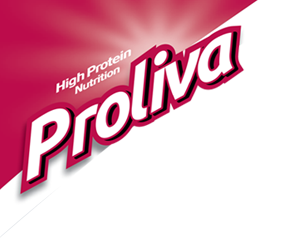-
How a protein works with gut bacteria to prevent obesity
21.09.2018Obesity is linked to higher levels of inflammation in the body, but the underlying mechanisms have remained unclear. Recently, however, a team of researchers has learned how one anti-inflammatory protein influences weight gain. There is a complex relationship between inflammation, gut bacteria, and obesity.A study paper recently published in the journal Cell Host & Microbe says that NLRP12, an anti-inflammatory protein, protects against obesity and insulin resistance in mice.
The study was conducted by researchers from the University of North Carolina at Chapel Hill, alongside colleagues from other research institutions across the world.
In their paper, the researchers also report that the NLRP12 gene — which encodes the anti-inflammatory protein with the same name — appears to be underactive in people with obesity.
Also, NLRP12 activity promotes the growth of certain strains of “good” gut bacteria, which have an additional protective effect against obesity and insulin resistance.
“Obesity is influenced by inflammation, not just by overeating and lack of exercise, and this study suggests that reducing inflammation promotes ‘good’ bacteria that can help maintain a healthy weight,” explains senior study author Jenny P-Y Ting.
Gene activity influences inflammation
In the new study, the scientists wanted to establish how the NLRP12 gene would affect a person’s likelihood of developing obesity.
To do this, they worked with mice that they had genetically engineered not to express that gene (knockout mice). Ting and team fed both the knockout mice and regular mice a high-fat diet for some months.
Though the mice in both groups followed the same kind of diet, the knockout mice accumulated more fat more easily and started showing signs of insulin resistance, which all indicate obesity development.
Also, the mice without the NLRP12 gene showed more inflammation both in the gut and in areas of their bodies where they deposited fat.
However, in order to understand how the inflammation related to weight gain, the researchers took an extra step; they moved some of the knockout mice to a different facility, and — to prevent the spread of pathogens — they gave the mice antibiotics.
“We noticed that the mice treated with antibiotics gained less weight than the mice that stayed in the old facility,” explains study co-author Agnieszka Truax.
“That led us to suspect that gut bacteria were involved in promoting obesity,” she continues.
Gut bacteria may play key role
Ting and team then studied knockout mice housed in a bacteria-free environment and noticed that they did not put on weight. This, they inferred, was because the animals’ systems were not influenced by bacterial activity.
In this case, the fact that the mice lacked the NLRP12 gene did not appear to influence their weight gain, suggesting that exposure to certain kinds of bacteria may be key to the eventual development of obesity.
The researchers also noted another interesting fact: the knockout mice that shared a living space with healthy rodents that did express the NLRP12 gene did not put on excess weight, either.
This suggests that they were exposed to good bacteria from the control mice, which protected them against becoming overweight.
Such findings are telling in the context in which studies have shown that obesity correlates with a loss of bacterial diversity in the gut.
In obesity, certain strains of bacteria are suppressed, allowing other bacteria to proliferate in the absence of competition.
The perils of bacterial loss
In the new study, the researchers saw that knockout mice that lacked the NLRP12 gene presented a significant loss of bacterial diversity.
In their case, the high-fat diet paired with the rise in inflammation facilitated by the lack of NLRP12 resulted in high levels of the bacterial family Erysipelotrichaceae. These bacteria, the researchers also found, exacerbate the damage done by a high-fat diet.
At the same time, the knockout mice lost numbers of Lachnospiraceae, which is a type of good gut bacteria that helps counteract inflammation and competes with Erysipelotrichaceae, curbing their spread.
Lachnospiraceae, the researchers explain, also appear to have a protective effect against insulin resistance and obesity in mice.
“All the inflammatory and metabolic changes we had seen in the NLRP12-knockout mice during a high-fat diet were essentially reversed when we resupplied Lachnospiraceae,” explains Truax.
The results may lead to better ways of addressing obesity, the scientists add; Lachnospiraceae produce short-chain fatty acids, a type of molecule that plays an important role in metabolic processes. Two of these are butyrate and propionate, which also possess important anti-inflammatory properties.
When the researchers tried to administer butyrate and propionate to knockout mice, they noticed that this approach counterbalanced the effect of the lack of NLRP12.
Emerging therapeutic possibilities
These results are particularly encouraging; butyrate and propionate are already readily available as supplements.
Moreover, the scientists have good reason to believe that the same reactions would take place in humans, as well — not just in mice.
That is because further analyses conducted on samples of fat cells collected from people with obesity indicated that the higher a person’s body mass index (BMI), the less active the NLRP12 gene appears to be.
Source: https://www.medicalnewstoday.com/articles/323129.php
Latest Blog Post
- Sugary Drinks Linked to a Higher Cancer Risk
- The Latest Research on Protein and Muscle-Building
- 27 Health and Nutrition Tips That Are Actually Evidence-Based
- Tall order: More to good growth in toddlers than just measurements
- Millions of cardiovascular deaths attributed to not eating enough fruits and vegetables

